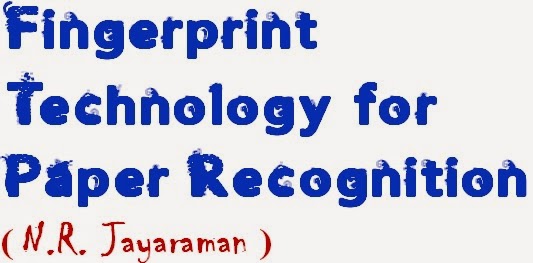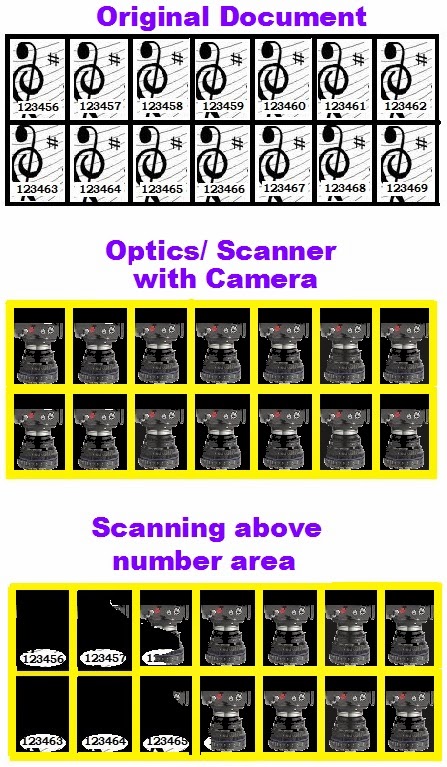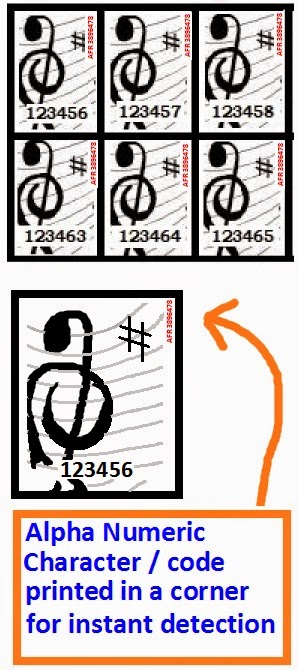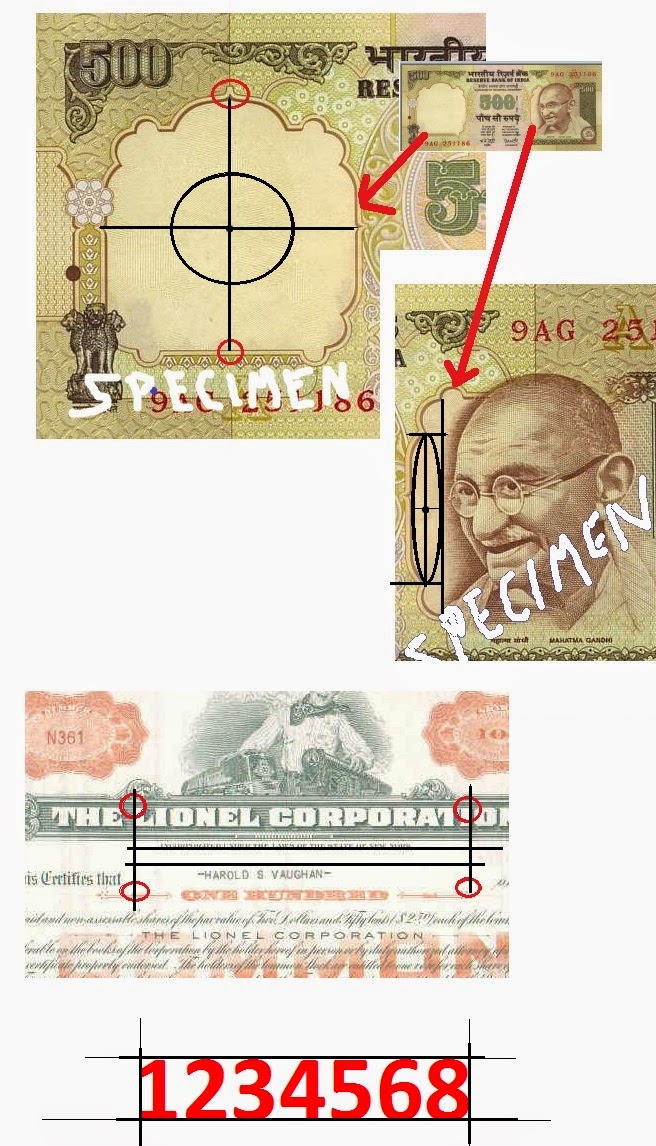
Recent Developments in Printing – Series- 6
Recent Developmentsin Printing – Series- 6

Few years back in a Conference held in Hong Kong, I had opportunity to witness a unique authenticating system for the paper through a technique called fibre identification Technology, developed in recent decades which are similar to fingerprint technology. It was showcased in the conference by Neryos a French firm. But subsequently no further news could be heard as there was reportedly some litigation on the use of the said technology. However some other firms like Fuji Xerox, Alpvision and Atlantic Zeiser have come out with something similar in the recent past for track and trace program.
Fingerprints consist of ridges and valleys formed in complex patterns that are unique for every person and provide an optimal verification method. Similarly the non uniform size and shaped fibbers that form the paper surface like the ridges and valleys in finger prints, enable authenticating genuineness of paper by the same biometric technique.


Like finger print in ones’ hand, every piece of paper has a unique and unfalsifiable identity built-in by way of fiber formation. Each sheet of paper manufactured has its own unique fibre woven structure and fiber structure in every individual sheet is different with that of the other in their pattern. The fiber formation consists of fine fibbers entangling with each other. These entangling patterns of natural fibers are random, and the possibility of possessing identical fibre pattern in another paper is considered to be remote and may be one or two in a million may only match nearer, but not absolute. This fact has been the basis for developing an identification technique with fiber formation as base for authentication.
By this technique the surface of the Paper is scanned either during printing or after production using an opto-electronic scanner or a high resolution camera and the unique surface patterns thus captured are converted with an algorithm into alpha-numeric character or data which is then recorded in a database. Later verification of the suspect documents requires a simple hand held reader, scanner or even a mobile phone camera to compare the original with the recorded data. Like use of biometrics to establish the identity of an individual with their ‘Finger print’ or ‘Iris’ in eyes, the unique pattern of the fiber formation in the paper, which varies from sheet to sheet, is used for authentication and therefore uniqueness and document authentication are guaranteed without any additional feature requirement for the documents themselves.
This new Technology generically known as Paper/ Fibre or Digital finger printing, based on the biometrics enables capturing unique characteristics of the fiber formation and storing them as a digital picture or, through the use of an algorithm converted as a alpha-numeric character or data to match the material in suspect. The pattern of paper fibers does not crumble even if a paper sheet is folded to some extent. Also the fiber formation rarely changes over time due to folding. Therefore, this system is considered highly reliable. This technology is totally different from other authentication techniques in vague such as Holograms, mixing Taggants with ink, special effect inks and Patterns which however stand exposed to forgery to some extent.
How does the system work?
As said earlier the fiber pattern or feature is captured through optics and converted to alpha-numeric character or data, pictures or other codes and stored in the central processor or server. Each document scanned by an opto-electronic device analyzes a specific zone and establishes a completely unique digital fingerprint for storing the information electronically. The technology used is based on one or several high speed and high resolution cameras. The scanning is done either with direct lighting on the paper or with transmitted light source.
Since the feature will be optically captured from a specifically defined spot or area in printed documents, the comparison of forged or suspect document will be done capturing the image from the same spot. The captured code of the suspect document is compared to those already stored codes in the server to verify whether both are same or the document under inspection is suspect.
One may wonder how this technology could be put to use on high speed machines! It is not difficult to use on high speed machines as the high speed, high resolution camera scans the images and sends the signals to the server like any other sheet or online image inspection systems fitted on the machine.


The alpha-numeric character or data reference so generated are stored and used as the document’s identifier. This makes it possible to identify and authenticate documents at any time. Alternately the alpha numeric code thus generated can be simultaneously printed in a corner of the document with inkjet printer connected to the online scanner so that in the event a document is suspected it can be instantly checked for genuineness.


The areas in the documents are first selected, marked and the same is recorded as golden image in the scanning memory console. When the sheet passes under a set of camera or scanning device, the exact areas to be scanned as already kept in the memory in console will only be scanned and data converted to alpha numeral character or data. See the illustration below to understand the concept.

With this technology:-
-A specific area on the document is scanned, identified, and stored electronically which constitutes a unique digital fingerprint for every document.
-Uniqueness and document authentication are guaranteed without any additions to documents themselves.
-Document identity is directly linked to the core composition of the material, and is therefore totally unfalsifiable.
-No changes is required in the document manufacturing process
Where will this be useful?
This technology is useful to several documents such as Pharmaceutical products, several of the Security documents like Certificates, Passports, Currencies and Bank Notes etc and etc.
Alp Vision one of the world leader in digital invisible technologies for product authentication and counterfeit protection has come out with several solutions based on this technology. (Read more information in their site: http://www.alpvision.com/fingerprint-product-authentication.html ).
Similarly Fuji Xerox has also come out with Paper Fingerprint recognition Technology. (Read more information in their site: http://www.fujixerox.com/eng/company/technology/base/security/xaya.html )













Recent Comments